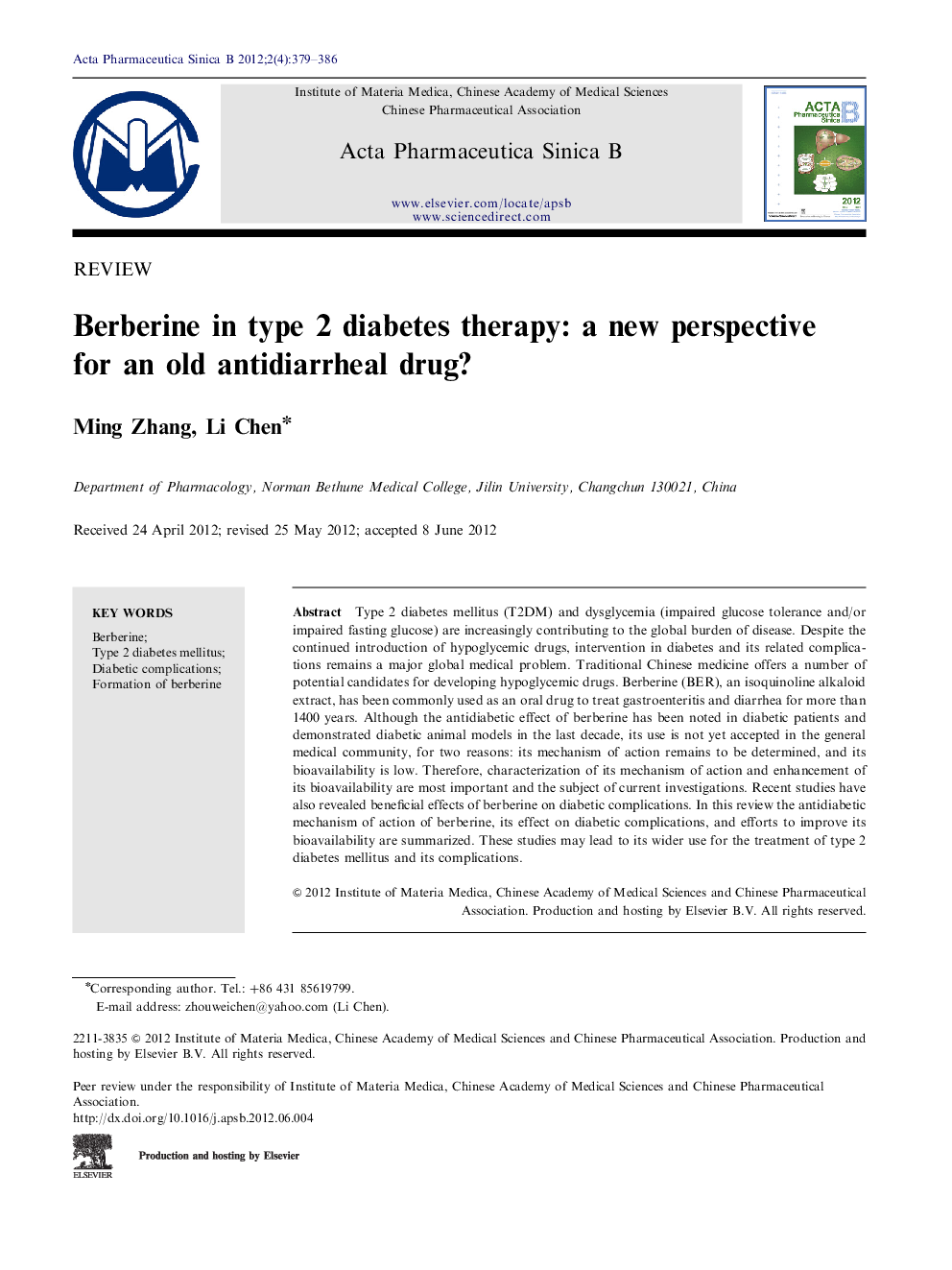| Article ID | Journal | Published Year | Pages | File Type |
|---|---|---|---|---|
| 2474780 | Acta Pharmaceutica Sinica B | 2012 | 8 Pages |
Type 2 diabetes mellitus (T2DM) and dysglycemia (impaired glucose tolerance and/or impaired fasting glucose) are increasingly contributing to the global burden of disease. Despite the continued introduction of hypoglycemic drugs, intervention in diabetes and its related complications remains a major global medical problem. Traditional Chinese medicine offers a number of potential candidates for developing hypoglycemic drugs. Berberine (BER), an isoquinoline alkaloid extract, has been commonly used as an oral drug to treat gastroenteritis and diarrhea for more than 1400 years. Although the antidiabetic effect of berberine has been noted in diabetic patients and demonstrated diabetic animal models in the last decade, its use is not yet accepted in the general medical community, for two reasons: its mechanism of action remains to be determined, and its bioavailability is low. Therefore, characterization of its mechanism of action and enhancement of its bioavailability are most important and the subject of current investigations. Recent studies have also revealed beneficial effects of berberine on diabetic complications. In this review the antidiabetic mechanism of action of berberine, its effect on diabetic complications, and efforts to improve its bioavailability are summarized. These studies may lead to its wider use for the treatment of type 2 diabetes mellitus and its complications.
Graphical abstractThis review summarized the antidiabetic mechanism of action of berberine, its effect on diabetic complications, and efforts to improve its bioavailability. These studies may lead to its wider use for the treatment of type 2 diabetes mellitus and its complications.Figure optionsDownload full-size imageDownload as PowerPoint slide
